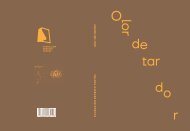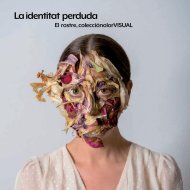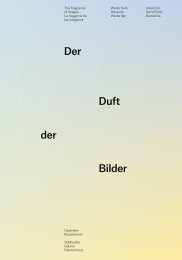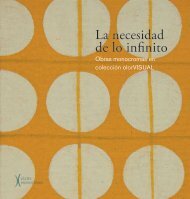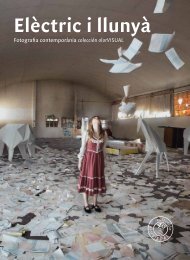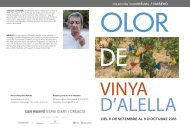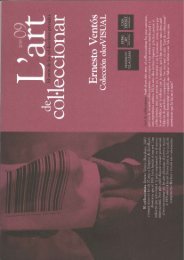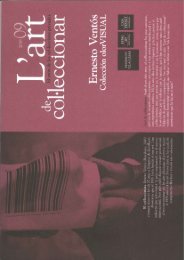Create successful ePaper yourself
Turn your PDF publications into a flip-book with our unique Google optimized e-Paper software.
us the ghosts of a lost room, of a voice, of the light that illuminates other<br />
faces, of a different air.<br />
Thus, for an instant, we have the privilege of living simultaneously in different<br />
times, of occupying several places at once. We defy the tyranny of the present<br />
that enchains us day after day and we relegate it to its due importance in the<br />
continual transit of living: that of converting our desire into memory and our<br />
yearning into nostalgia and imagination.<br />
During those moments life unfolds in simultaneous and contradictory<br />
dimensions and progressions. We are simultaneously a ‘were’ and a ‘will be’. The<br />
present becomes the body of time, the tense and vibrant surface on which the<br />
reflections of the changing light of the skies, and the dense light that pushes up<br />
from the depths converge. In that instant, the world takes on a corporeality so<br />
uplifting and rich, so detailed and precise that when it passes it leaves us like cast<br />
ways, surprised to find ourselves still alive on the very shore from which we set out.<br />
It is strangely moving that that perfume, that intense, fleeting and volatile<br />
essence unleashed by the storm should be none other than the key giving access<br />
to our memory, to the most profound, most private territory of our imagination.<br />
The memory makes use of that essence in order to make itself present, in the<br />
way that a spirit can make use of any body to manifest itself, leaving us when it<br />
vanishes the full and bitter taste of our own mortality.<br />
Jürgen Partenheimer<br />
Scent and track are one, l’ odeur des choses; it saves, enchants and repels us.<br />
Without the sense of smell we shall never penetrate into the mysteries of<br />
imagination. It is the flavor of all things, the olfactory codes which reveal<br />
immediate sensuality, unsettlingly beautiful.<br />
Txomin Badiola<br />
The small is big was an artistic slogan of the nineties. Txomin Badiola, one of<br />
the most interesting minimalists in the Basque Country, called this work “Small<br />
relative I” or “Relatively small I” in 1992.<br />
A confessed Oteiza follower and with an already consistent and coherent<br />
work of his own, he claims the importance of the small space in itself profane<br />
and sacred at the same time, with its natural colour and smell of chest wood<br />
and industrial plywood, with its crossbreeding between painting and sculpture,<br />
the image and the emptiness, the colour, the smell, the taste and the touch<br />
everything in one. It reminds me of the physical emptiness more than of the<br />
metaphysical one and brings to me the smell of the chest trees in spring and of<br />
the design and do-it-yourself shops in winter The art work is sober, hermetic,<br />
refined and cultivated.<br />
Peter Halley<br />
Aromas from a hillside fig grove blend with the briny sea air. Dusted with the<br />
scent of jasmine, a breeze moves gently from sea to land amid the glowing blue<br />
of the evening sky. As the dusk deepens and the air cools, the crisp, cold smell of<br />
ocean fills the senses.<br />
155




